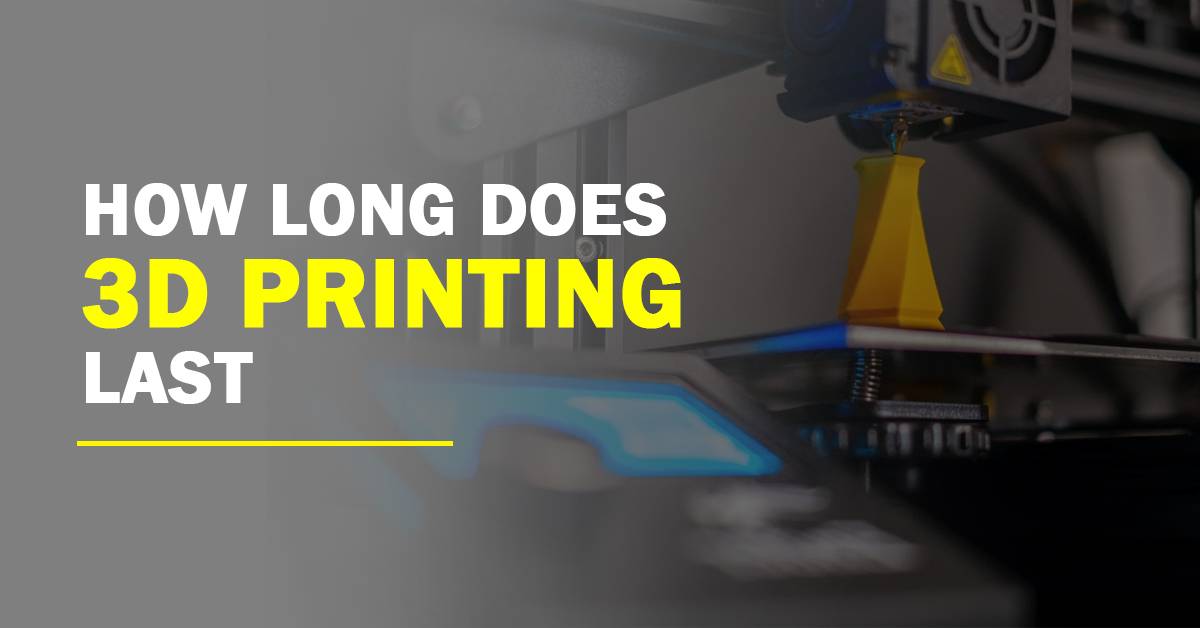Table of Contents
ToggleIntroduction to 3D Printing
3D printing has revolutionized the manufacturing industry and many other technical institutes, enabling the creation of intricate and customized objects with ease. From prototyping to producing end-use products, 3D printing has found its application in various fields in today’s technologically developing world. However, like any manufacturing process, it’s essential to understand the longevity of 3D printed objects if the manufactured project doesn’t last for a proper or required time then it is not a useful technology. In this blog post, we will explore the factors that affect the lifespan of 3D-printed items and provide insights into the durability and quality of 3d printed objects.
Also Read: Best American Made 3D Printers
Understanding Technology Of 3D Printing
Before diving into the lifespan of 3D-printed objects, let’s briefly explain how this technology works. 3D printing, also known as the additive manufacturing process, which involves building objects layer by layer using a computer-controlled process. A 3D printer utilizes a variety of materials, including plastics, metals, ceramics, and even organic compounds, to create three-dimensional physical objects from digital designs.
Durability of 3D Printing: Factors Affecting the Lifespan of 3D Printed Objects
- Material Selection: The choice of material significantly impacts the durability and longevity of 3D-printed objects. Different materials possess varying properties such as strength, flexibility, and resistance to wear and tear. For example, objects printed with durable materials like nylon or metals tend to last longer compared to those printed with more brittle materials like PLA (polylactic acid).
- Design Considerations: The design of a 3D-printed object plays a crucial role in its lifespan. Poorly designed objects with weak structural integrity are more likely to experience premature failure. Factors such as wall thickness, infill density (internal structure), and the presence of support structures can affect an object’s strength and resilience.
- Post-Processing and Finishing: Post-processing techniques such as sanding, polishing, or applying protective coatings can enhance the durability of 3D-printed objects. These techniques can improve surface quality, increase strength, and provide resistance to environmental factors like moisture or UV radiation.
- Intended Use and Stress Factors: The lifespan of a 3D printed object also depends on its intended purpose and the stress factors it may encounter during its use. Objects subject to continuous stress, impact, or exposure to extreme temperatures are more likely to degrade faster. Understanding the limitations of 3D printing materials in different scenarios can help determine the expected lifespan.
- Environmental Factors: The surrounding environment can affect the longevity of 3D-printed objects. Exposure to sunlight, humidity, or chemicals may cause certain materials to degrade or become brittle over time. Considering the environmental conditions in which an object will be used or stored is essential for estimating its lifespan.
Conclusion
The lifespan of 3D printed objects can vary depending on several factors, including material selection, design considerations, post-processing techniques, intended use, and environmental factors as well as the quality of the materials used. While some 3D-printed items may last for years or even decades, others may have a shorter lifespan due to their specific applications or material properties and qualities of the materials. By carefully considering these factors and making informed decisions during the design and manufacturing process, it is possible to create 3D-printed objects that meet the desired lifespan requirements and can last long.
As 3D printing technology continues to advance, researchers, technologies, and manufacturers are constantly improving the durability of printed objects. Additionally, ongoing developments in material science and printing techniques are expanding the range of materials available, offering greater options for durable and long-lasting 3D printed objects for the required and sustainable time.
In conclusion, 3D printing provides immense opportunities for innovation in technology and customization. Understanding the factors that affect the lifespan of 3D-printed objects empowers designers and manufacturers to create products that meet specific durability requirements, ultimately contributing to the growth and adoption of this transformative technology. for sustainable development.







